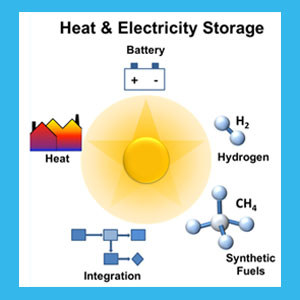Speakers
Dr
Claire Villevieille
(Paul Scherrer Institut)Ms
Leonie Vogt
(Paul Scherrer Institut)
Description
The need for higher specific energy batteries has led to the exploration of a range of conversion materials to be used as anodes in metal-ion batteries. Tin is one such promising novel anode material, which upon conversion to Li4.4Sn or Na3.75Sn has been found to show specific charge as high as 991 mAh/g and 846 mAh/g in lithium-ion and sodium-ion batteries, respectively [1, 2]. However, upon conversion this material experiences a volume expansion of up to 300 %, which leads to particle fracture and electrical isolation of particles with every cycle, resulting in fairly rapid capacity fade with cycle number. In an attempt to combat this volume expansion we alloyed the active tin with inactive transition metals to form the tetragonal intermetallic MSn2 (with M = Co, Fe, Mn), attempting to give the reaction a framework which buffer its expansions. The electrochemical behaviour of these alloys in Na-ion batteries was studied in a half-cell configuration and the mechanisms characterised using advanced electrochemical techniques as well as in situ and ex situ XRD analysis. Being isostructural, the only difference between these materials lies in the change of the transition metal. The three transition metals are known to be inactive towards sodium since Na-Co, Na-Fe and Na-Mn alloys do not exist, yet in spite of this the mechanisms by which the MSn2 alloy reacts within the battery depends strongly on what element tin is alloyed to initially.
References:
1.Courtney, I.A., Journal of The Electrochemical Society, 1997. 44(6): p.2045.
2.Komaba, S., et al., Electrochemistry Communications, 2012. 21: p.65-68.
Author
Ms
Leonie Vogt
(Paul Scherrer Institut)
Co-authors
Dr
Claire Villevieille
(Paul Scherrer Institut)
Petr Novak
(Paul Scherrer Institut)

